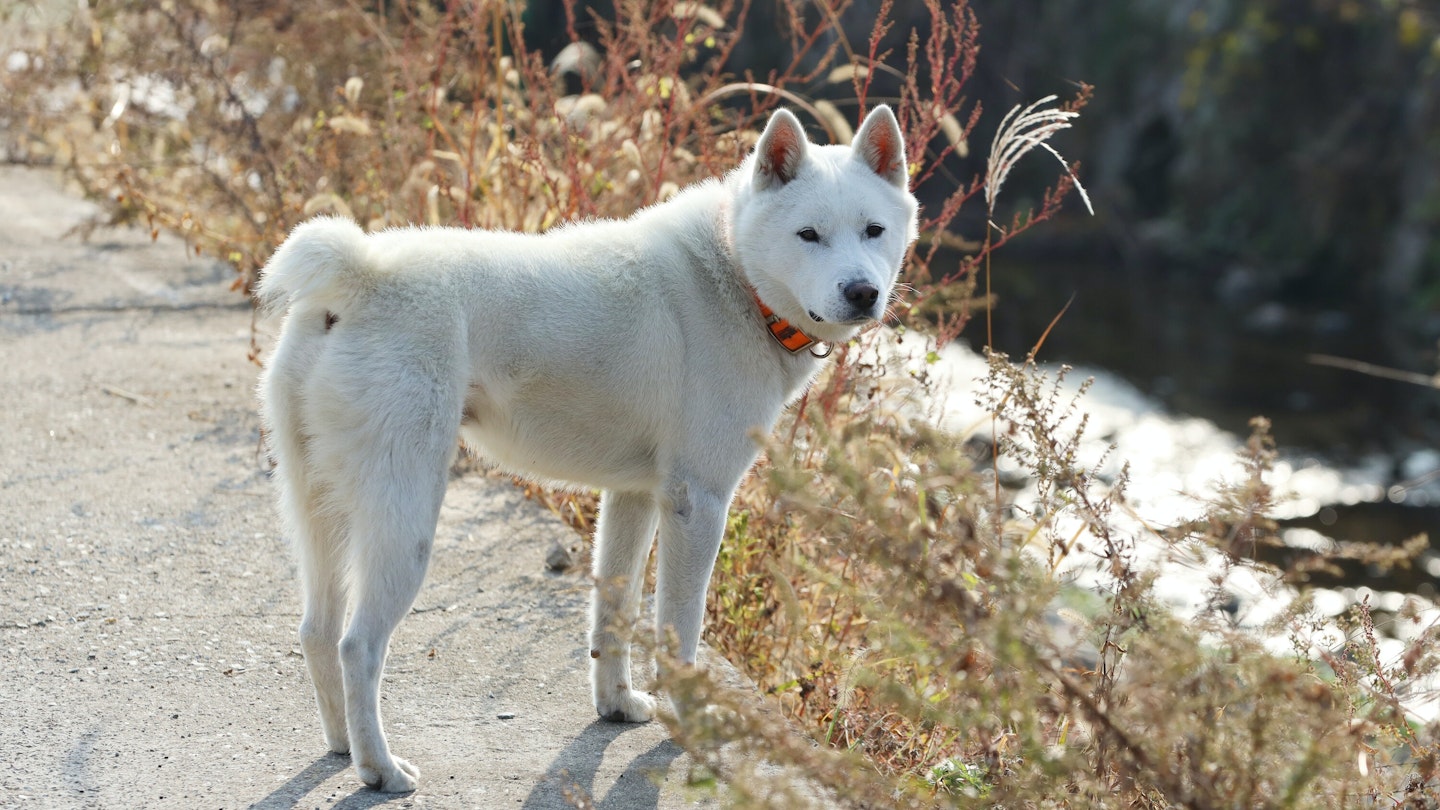Donggyeongi are the pride and joy of Gyeongju, a city in South Korea known for its historical sites. Why, then, are the dogs so hard to find? Writer Ann Babe traveled to Gyeongju on a mission to find out.
Gyeongju’s Historical Significance
Some visit Gyeongju for the tombs, temples, and palaces – to see relics of the centuries-old Shilla era still standing in the age of selfie sticks and scooter apps. Known in South Korea as a “museum without walls,” Gyeongju boasts more UNESCO World Heritage sites than any other place in the nation.
The Mystery of the Donggyeongi
Among the reasons to visit Gyeongju lies a particular breed of dog, the Donggyeongi, named after Gyeongju’s ancient title, Donggyeong or “eastern capital.” Recognizable by its uniquely bobbed or even absent tail, this breed is protected as Natural Monument No. 540 by the South Korean government. This not only signifies its heritage but also its status as a national treasure.
The Donggyeongi faces the threat of extinction, with only 519 purebreds recorded in the nation. Despite living many years in South Korea with my own dog, a rescued Labrador retriever, I had never encountered a Donggyeongi. This piqued my curiosity and spurred my quest toward discovering more.
From Royal Companion to Dog in Danger
Dating back to the 5th and 6th centuries, the Donggyeongi’s roots have been confirmed through clay figurines discovered in Shilla tombs. Once bred as companions for royalty, these dogs are admired for their affinity with humans. Tragically, they have undergone their own suffering, particularly during the Japanese occupation when their fur was used commercially.
The misunderstanding surrounding these dogs has played a part in their decline, as their missing tails were mistakenly thought to be defective. Consequently, this stigma led to a general neglect of their existence.
The Challenge of Discovering Donggyeongi
As I traveled to Gyeongju, I reached out to friends in Seoul to inquire about the Donggyeongi. The responses were filled with confusion, indicating a common disconnect even among locals. Gyeongju’s other notable native dog, the Jindo, is largely recognized, yet the elusive Donggyeongi remains a mystery.
Investigating Gyeongju
Upon arriving in Gyeongju, the search for Donggyeongi sightings began. I noticed the breed’s silhouette in marketing materials and souvenirs but had yet to encounter a real-life example. Asking locals in cafes and bakeries yielded no tangible leads, leaving me feeling more determined to uncover the truth.
Persistence at City Hall
My visit to City Hall revealed the city’s ongoing efforts for the Donggyeongi. They are developing plans to promote this breed, hoping for a revival through new breeding complexes, museums, and tourism initiatives to educate the public.
As I inquired about seeing a Donggyeongi, excitement arose around the room. I eventually hopped into a vehicle, leading to a conservation office where, at last, I met the Donggyeongi in person. Their presence was heartwarming, but rather than just a chance encounter, it marked the start of renewed awareness and protection efforts for this rare breed.
Leading the Donggyeongi Revival
In collaboration with local pet owners, research on the Donggyeongi has blossomed through the efforts of dedicated individuals like Mr. Choi, who has made it his mission to advocate for the protection of this breed. Microchipping and strict ownership regulations align with the conservation movements in place to ensure the breed’s continuity.
As these efforts wrap around the Donggyeongi, it becomes clear that their survival is emblematic of South Korea’s cultural identity. Commenting on this bond, Mr. Choi observes, “A native dog tells us much about a nation.” He draws parallels between the breed and Korea’s national personality—soft, social, and friendly.
My experience in Gyeongju solidified this sentiment, as every friendly local and each Donggyeongi I encountered reminded me of the intertwined narratives of culture, history, and conservation efforts.




